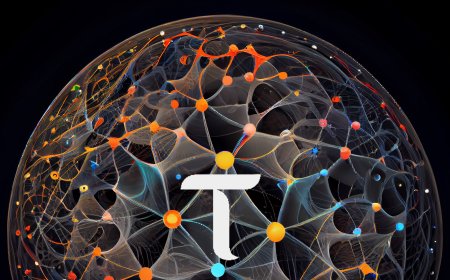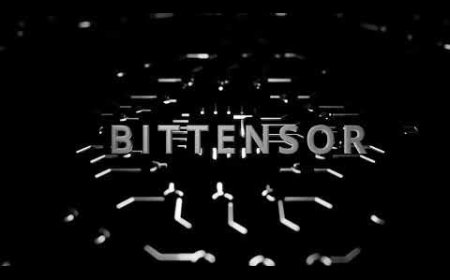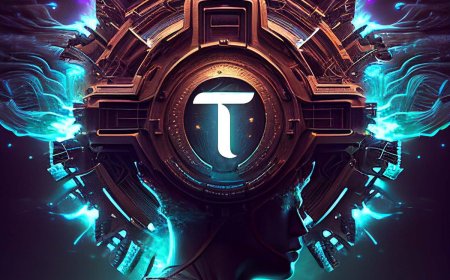Bit Tensor: Building a Decentralized AI Network on Blockchain
Bit Tensor is an ambitious project aimed at building a decentralized artificial intelligence network based on blockchain technology. This project combines artificial intelligence (AI) with blockchain to create a new paradigm for developing and accessing AI capabilities
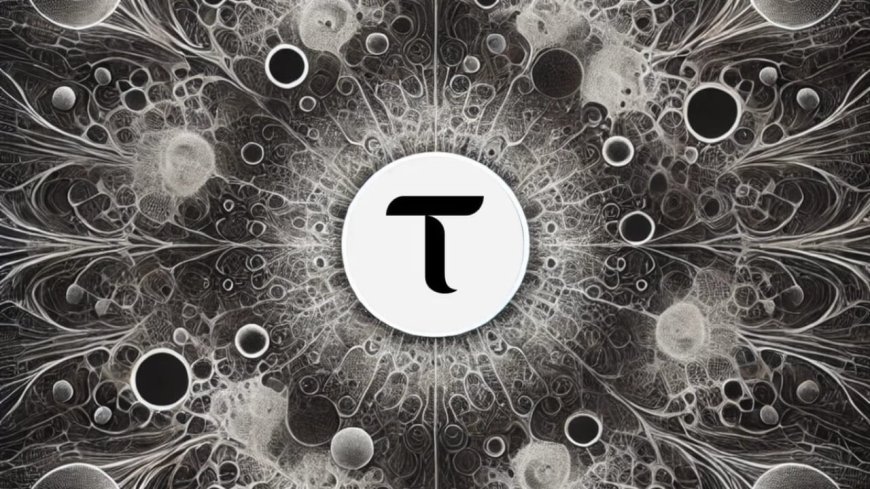
Bit Tensor is an ambitious project aimed at building a decentralized artificial intelligence network based on blockchain technology. This project combines artificial intelligence (AI) with blockchain to create a new paradigm for developing and accessing AI capabilities. In this article, we'll explore the key aspects of Bit Tensor, its innovative approach, and its potential impact on the future of AI.
The Vision Behind Bit Tensor
At its core, Bit Tensor aims to create a decentralized AI marketplace where participants can contribute computational power, develop AI models, and access AI capabilities. The project's founders, Jacob Steeves and Caro Front, envision a future where AI development is not controlled by a few large corporations but is instead a collaborative effort involving a global community of developers, researchers, and users.
Jacob Steeves, inspired by his background in neuromorphic chip development and machine learning, saw the potential to apply blockchain principles to AI development. The idea was to create a system that could harness collective intelligence on a global scale, similar to how Bitcoin leverages distributed computing power for consensus.
How Bit Tensor Works
Bit Tensor operates on a principle similar to Bitcoin mining, but instead of solving cryptographic puzzles, the network's participants are producing and validating AI intelligence. Here's a breakdown of the key components:
- Miners: These are computers that run AI models and produce intelligence outputs. Miners in the Bit Tensor network are essentially language models trying to produce representations that validators will find valuable.
- Validators: These nodes evaluate the quality and value of the intelligence produced by miners. Validators attempt to determine which miners in the network are producing the most valuable outputs.
- Tau Token: This is the native cryptocurrency of the Bit Tensor network, used for incentivizing participants and accessing AI services.
The network uses a consensus mechanism that combines elements of proof-of-work and proof-of-stake to ensure the quality and reliability of the AI outputs. This mechanism allows for a free-for-all evaluation of the informational significance of miners' outputs, with validators racing to speculate on their value.
The Synapse Update
Recently, Bit Tensor underwent a significant upgrade called Synapse (version 3.0.0). This update expanded the network's capabilities in several ways:
- Improved efficiency: Reduced network costs by approximately 100 times.
- Enhanced versatility: Allowed for different types of AI outputs beyond just tensor-based representations.
- Increased bandwidth: Enabled more requests per second and broader AI capabilities.
The Synapse update allows the network to integrate numerous types of "actuators" or outputs, similar to how the human mind has various ways of interacting with the world (e.g., speech, movement). This expansion opens up new possibilities for AI applications built on top of Bit Tensor.
The Tau Token and Its Utility
The Tau token plays a crucial role in the Bit Tensor ecosystem:
- Access to AI services: Holders can use Tau to query the network and access AI capabilities.
- Incentivization: Miners and validators are rewarded with Tau for their contributions.
- Governance: Large Tau holders can influence the direction of the network.
The token follows a Bitcoin-like emission schedule, with a total supply cap of 21 million and halvings approximately every four years. Every 12 seconds, a new block is created, releasing one Tau token, which is then split 50/50 between miners and validators.
Data and Training
One unique aspect of Bit Tensor is its approach to data. Instead of focusing on proprietary datasets, the network utilizes publicly available data from the internet. The majority of the text used for training comes from a dataset called "The Pile," which is supplemented with data from common web crawls.
This approach separates Bit Tensor from traditional machine learning paradigms, where the value is often seen in the data itself. In the Bit Tensor model, the real value lies in the extracted knowledge and the ability to perform inference on that knowledge.
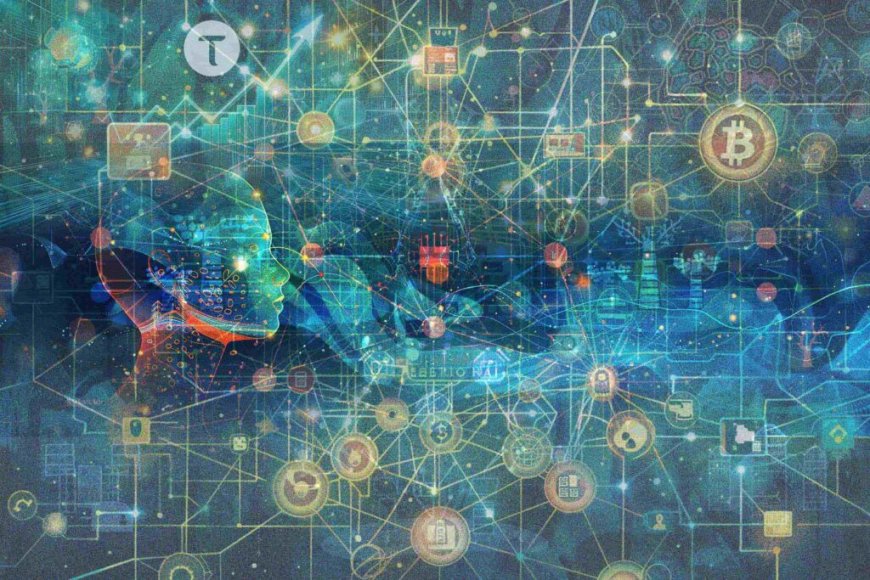
Challenges and Opportunities
While Bit Tensor presents an innovative approach to AI development, it also faces some challenges:
- Hardware requirements: As the network grows, the computational demands for miners and validators increase, potentially limiting participation to those with significant resources. Currently, running a competitive node on the network requires GPUs and can cost thousands of dollars per month.
- Adoption: The project is still in its early stages and needs to attract more developers and users to reach its full potential. The team acknowledges that they're still in the "people are laughing at us" phase, reminiscent of Bitcoin in its early days.
- Competition: Bit Tensor is entering a space dominated by large tech companies with substantial resources. Competing with established players like Google and OpenAI presents a significant challenge.
However, these challenges also present opportunities:
- Democratization of AI: By allowing anyone to contribute and benefit from the network, Bit Tensor could accelerate AI innovation. The open nature of the system means that a wider range of participants can potentially influence AI development.
- New business models: The decentralized nature of the network opens up possibilities for novel AI-powered applications and services. Developers can build applications on top of Bit Tensor without needing to invest in expensive infrastructure themselves.
- Improved AI ethics: A more open and collaborative approach to AI development could lead to more transparent and ethical AI systems. By making AI a "public good," Bit Tensor aims to ensure that the technology benefits humanity as a whole rather than just a select few.
The Future of Bit Tensor
The founders of Bit Tensor have ambitious goals for the project's future:
- Becoming a focal point in the AI industry, known for its scale and performance.
- Developing a suite of high-quality AI applications built on top of the Bit Tensor network.
- Establishing Bit Tensor as the "neural internet" where people train and host their AI models.
In the next three to five years, the team hopes to see:
- Bit Tensor recognized as having the largest neural network in the world, similar to how Bitcoin is known for having the largest supercomputer network.
- A thriving ecosystem of applications built on top of Bit Tensor, showcasing the power of decentralized AI.
- Increased ease of use for developers, making it the default method for fine-tuning and running inference for AI applications.
The team also anticipates the emergence of new, innovative technologies that they can't even predict now, as developers leverage the power of the Bit Tensor marketplace.
Integration with the Broader Blockchain Ecosystem
Bit Tensor has plans to integrate with the Polkadot ecosystem, which will bring several benefits:
- Increased liquidity for the Tau token through listing on various decentralized exchanges (DEXes).
- Enhanced decentralization and security through shared consensus with the Polkadot network.
- Greater exposure and potential for adoption within the broader blockchain community.
This integration is expected to happen by the end of the year, marking a significant milestone in the project's development.
Use Cases and Potential Applications
The Bit Tensor team envisions a wide range of applications that could be built on top of their network:
- A competitor to DALL-E or GPT-3, leveraging the collective intelligence of the network.
- A Codex-like system integrated into development environments like Visual Studio.
- Language models that can be fine-tuned for specific tasks or writing styles.
The possibilities are vast, and the team is excited to see what innovative applications developers will create as the platform matures.
Conclusion
Bit Tensor represents a bold attempt to reshape the AI landscape by combining the power of blockchain technology with artificial intelligence. By creating a decentralized marketplace for AI capabilities, the project aims to democratize access to AI and accelerate innovation in the field.
While there are certainly challenges ahead, including high hardware requirements and competition from established players, the potential benefits of a more open, collaborative approach to AI development are significant. As the project continues to evolve and attract more participants, it will be fascinating to see how Bit Tensor impacts the future of artificial intelligence and blockchain technology.
The success of Bit Tensor will largely depend on its ability to attract a critical mass of developers, miners, and users. If it can achieve this, it has the potential to become a major player in the AI industry, offering a truly decentralized alternative to the current AI landscape dominated by large tech companies.
For those interested in the intersection of AI and blockchain, Bit Tensor is definitely a project worth watching. Whether it will succeed in its ambitious goals remains to be seen, but it's clear that the project is pushing the boundaries of what's possible in both the AI and blockchain spaces. As we move towards an increasingly AI-driven future, projects like Bit Tensor may play a crucial role in ensuring that the benefits of AI are widely distributed and that the technology develops in a way that serves the broader interests of humanity.
Source : @The Bittensor Hub.

